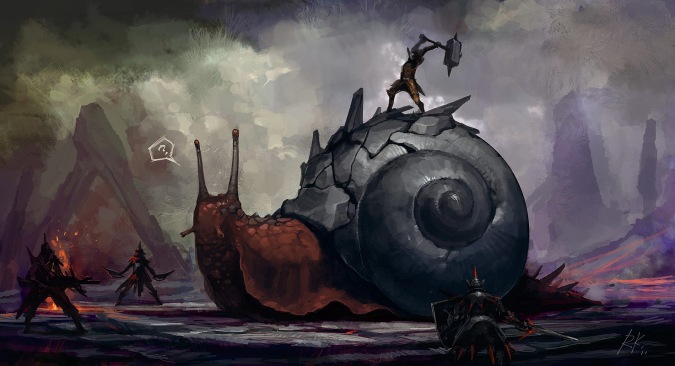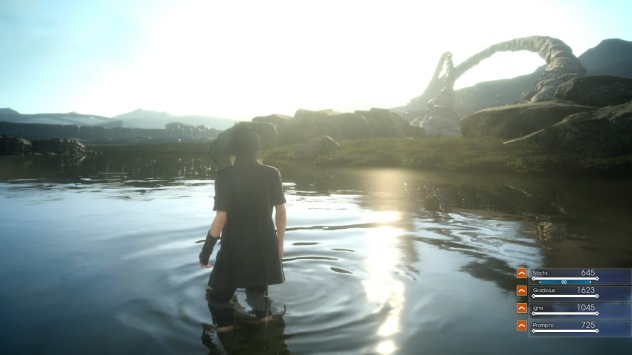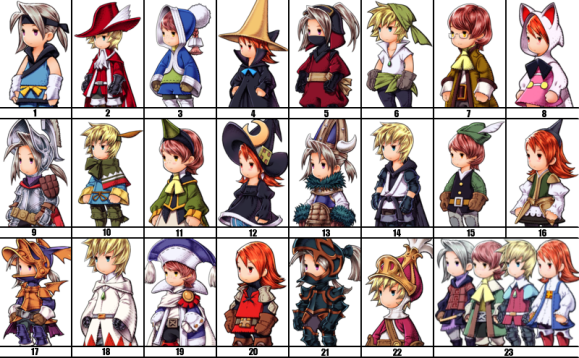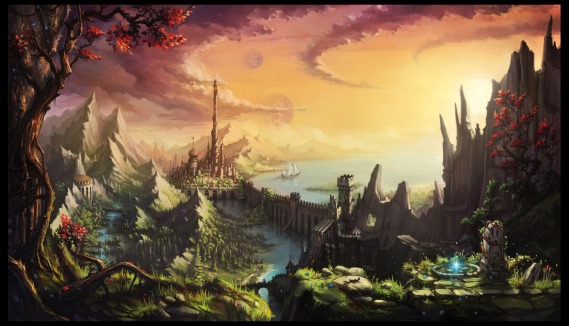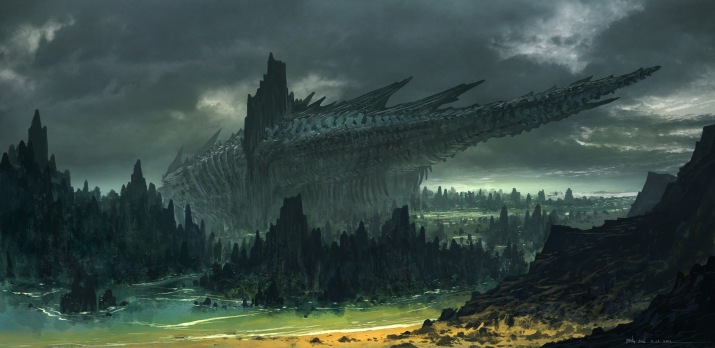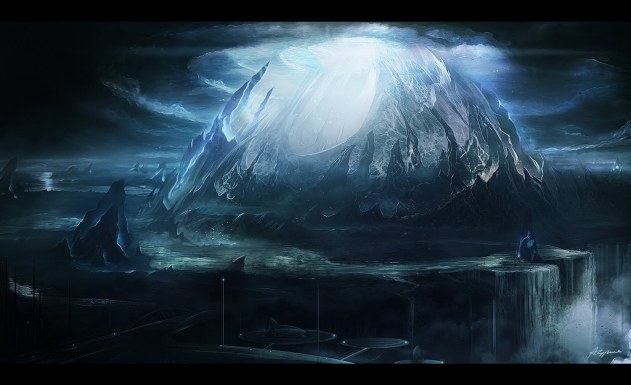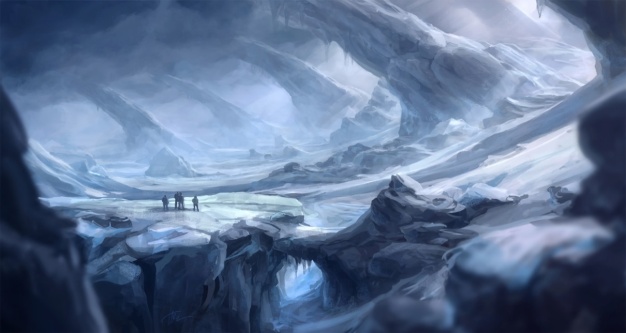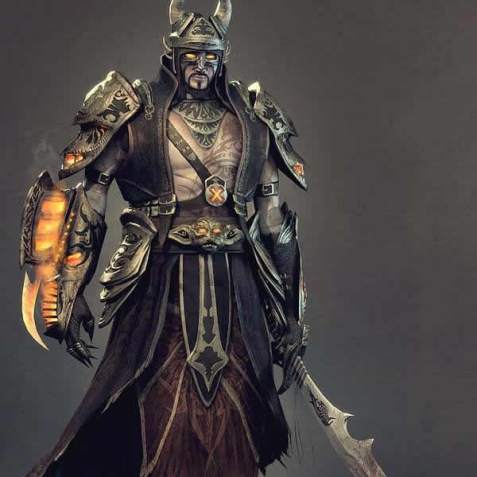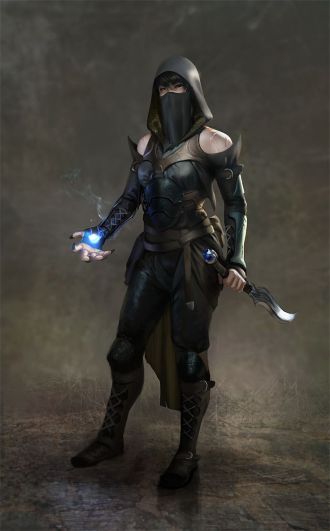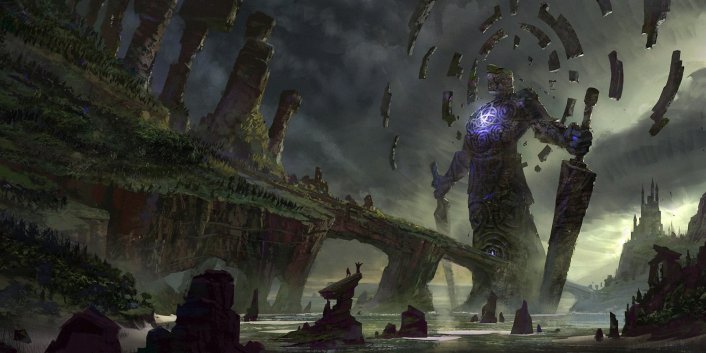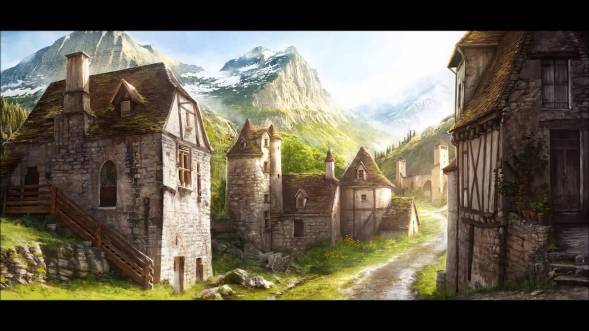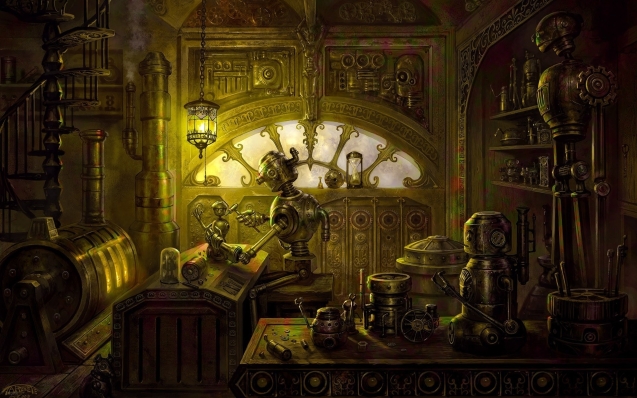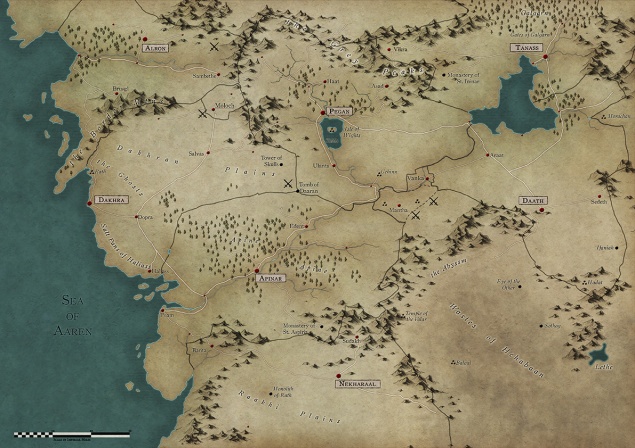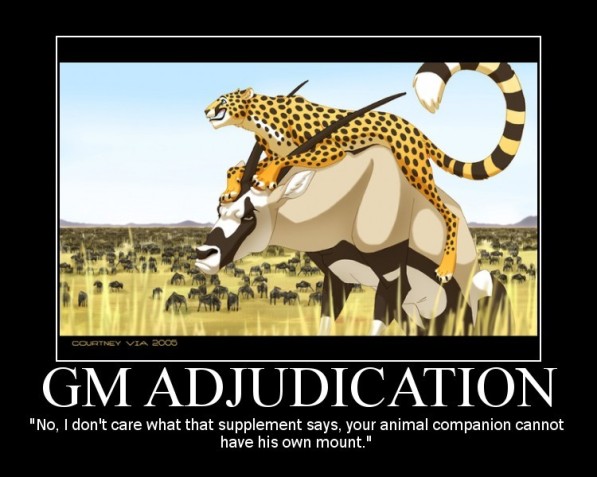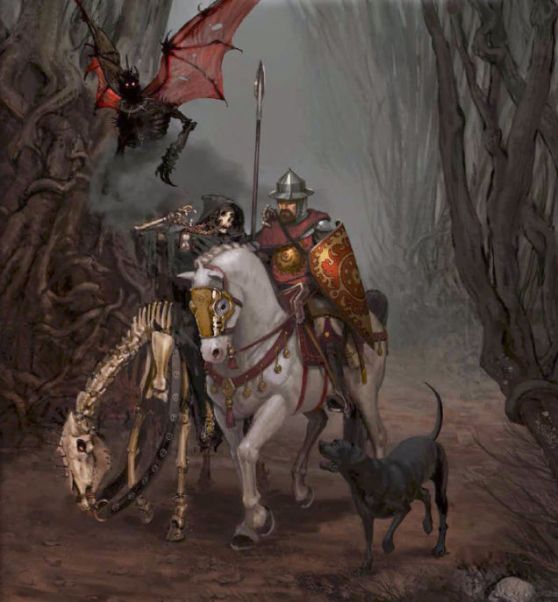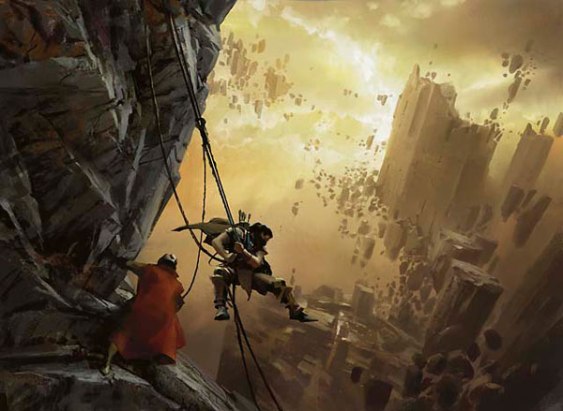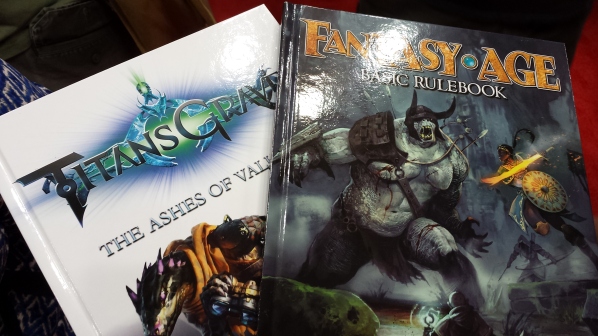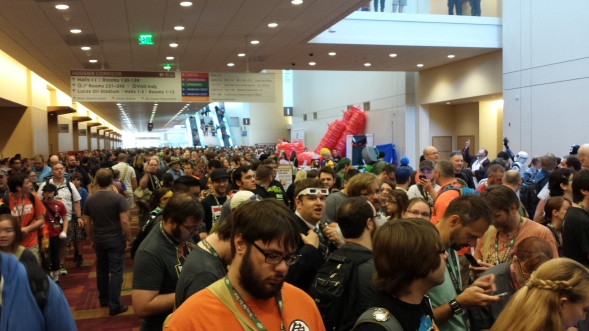Today we get into the meat and potatoes of the campaign bible by describing and breaking down the details of the races of the world and adding a little flavor with a custom-built calendar. It’s always important to add even mundane and routine things into your world because what doesn’t stand out tends to be the things that make your world more realistic. These are things that we take for granted in real life such as days of the week, typical weather patterns and seasons, food diets, superstitions, implied laws and regulations, etc.

Then there is the detail of the races in your world. They can be a traditional lot that are familiar to the average gamer or they can be completely foreign. If you go the route of the latter, make sure there are some familiar features to give them a foundation to build the idea of what they look like in their mind. If you create creatures and people with such fabricated concepts, it may be difficult for the players to wrap their heads around and paint a visual in their minds without being confused. Race should be well established for role playing purposes as well. There is no law stating you have to make dwarves and elves hate each other. You don’t have to make dwarves and orcs mortal enemies either. Don’t be afraid to spice things up and change things that might go against the norm because your world doesn’t have to be the norm. It’s your world.
Although it isn’t entirely necessary, giving percentages of each race that makes up the whole world’s population can help give players a better way to imagine how populated areas look. If they know that the majority of your world comprises of humans, when they enter a village or city, they will tend to imagine people milling about in the background as humans to make up the entire scene they just painted.
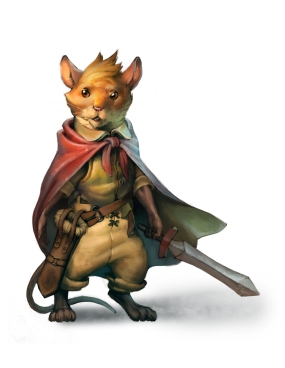
Another tidbit of information you can provide your players that will also help you in the long run are names. Some people have a lot of trouble coming up with a name they like. Other times they give up and just randomly use a name that they later regret picking. Whatever the case may be, giving a list of first and last names for them to pick can make their creation process easier. It can be a nice time saver for you down the road when you have to come up with a non-important NPC on the spot and need a name. The list you make now can be referenced at a later time. It is also nice to add a little flavor of the race, too, if there is any unusual features about them such as better relation with another race or if the race has a general preference over a sporting event or deity. You need not write a novel for each race. A couple of paragraphs are sufficient for giving players a general idea of what that race feels like. You’re essentially advertising the races to the players as if they were window shopping for the right one.
To begin with, here is the Zatra calendar. Unique names for months may be tough for people to memorize although it might not be important for them to do so. For those who really love becoming fully immersed in the world may take the time to learn the names and even the holidays. Adding this knowledge into conversation while roleplaying will add that much more realism and excitement into the game. Besides the names, I included some significant features that occur during that time. I leave these open and in name only initially to draw interest at a later time.
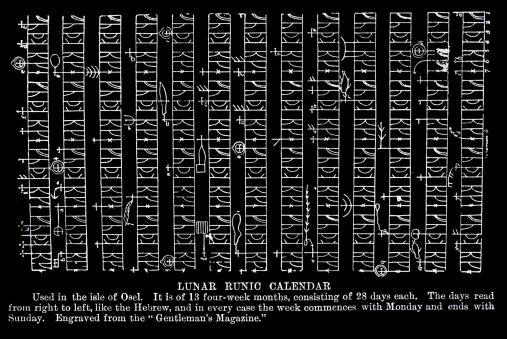
The Zatra Calendar
Most civilizations in Zatra follow the first calendar that was conceived by the elves after the year 232. This follows a conformed pattern of 10 months, each month comprising of 5 weeks, and each week containing 5 weekdays (First Day, Moon Day, Midweek, Week Eve, Final Day).
Month Seasonal Significance
Mako First month of Spring, Star Harvest Begins
Ramo Month of the Spring Equinox, Day of Doka
Endispar First Month of Summer, Fire Festival
Venispar Month of the Summer Solstice, Giving of Thanks
Luno First Month of Fall, Major Harvest Begins
Luktavo Month of the Autumn Equinox, Lunar Day
Menzo First Month of Winter, Day of Solitude
Tykober Month of the Winter Solstice, Remembrance Day
Nunober God’s Day celebrated, First Frost Eve
Umbo Soul Festival celebrated, Death Reborn Eve

The Four Main Races of Zatra
The people of Zatra once were dominated by humans (80%), but since the Touch, they have been nearly wiped out to 20%. Dwarves now are the majority species (60%) while halflings (5%), elves (10%), and other races (5%),(including half-breeds) make up the rest. Here are notes and common names for each major race:
The Windemeir (Humans)
The few humans that remain are those wise enough to accept the invitation of the dwarves to live underground and avoid the Touch. Most of the human race was wiped out due to arrogance and pride, ignoring the imposing doom of the Touch’s spread and not wishing to dwell with dwarves underground. Interestingly enough, nearly all of the Windemeirs (Wĭn-dĕh-mērz) are from one kingdom of Zatra, called Kindred. These survivors have traditional first and last names with middle names given to those of nobility descent.
Male First Names: Alastair, Ambros, Andrew, Avery, Barnaby, Bartholomew, David, Eward, Geoffrey, Hugh, Humphrey, John, Julian, Milton, Myles, Nathanial, Oliver, Roger, Solomon, Thomas, Timothy, Wyatt, Zachary
Female First names: Agnes, Blanche, Bridget, Clemence, Dolores, Edith, Eleanor, Emma, Ethel, Florence, Isabel, Joyce, Margery, Marion, Mildred, Molly, Princilla, Rose, Ruth, Susanna, Sybil, Ursula, Valorie, Winifred
Surnames: Andrews, Ashenhurst, Barlow, Battle, Beadows, Berkhead, Blackwood, Blake, Bishop, Bloom, Blunt, Bright, Carpenter, Cartwell, Castledon, Collingford, Crane, Crook, Cunley, Dawnthorpe, Downer, Dragonwell, Dunfield, Elkhorn, Everett, Fitzgeoffery, Fitzgerald, Fletcher, Francis, Fray, Gladdish, Goldworth, Gossingham, Grimmer, Hadley, Hale, Hammersfield, Hargreave, Humphrey, Hunter, Hyde, Ives, Jenkins, Jollybad, Keast, King, Kottlegrey, Lestrange, Leventhorpe, Langford, Lloyd, Mansfield, Merriwethre, Mortimre, Motts, Moxley, Narbridge, Northam, Noyes, Olver, Pallcraft, Payne, Penhale, Polkinghorn, Pummel, Quail, Quillmaker, Ratley, Reeve, Ringer, Rosserford, Rowley, Russell, Sawford, Shivington, Silcox, Smythe, Snell, Stargrave, Stokes, Strangeways, Teague, Tellam, Throckmorton, Thurman, Torrington, Trowbridge, Unger, Uxbridge, Vaughan, Vawdrey, Whitaker, White, Winkle, Wyndham, Yates, Ysterman.

Random picture of a Mindflayer
The Dokaleers (Dwarves)
The dwarves are a hardened race with a strangely powerful resilience to the Touch (although not immune). The Dokaleers (Dōh-kŭh-lērz) make up two of the three Dwarven Kingdoms and are credited for proposing the idea of building the Chambers to protect all untainted by the curse. Their name comes from the First Dwarf, Doka, who was created by God in the 12 year of Zatra. All dwarf surnames are their clan names.
Male First Names: Arn, Barin, Dolmen, Fargrik, Fyorn, Gluto, Grulf, Haxan, Holst, Illvar, Jokum, Krog, Krune, Kvalgar, Lofgren, Ludvig, Nylan, Rangvald, Stenger, Svensoren, Tarl, Wolvar, Yospur
Female First Names: Bjerke, Dreylan, Falka, Frau, Frunda, Gorana, Grayka, Halskir, Hammelmar, Helvig, Hjork, Lykke, Nessa, Ryngylrund, Rosenklau, Syldi, Vannim, Yilsi, Yuska, Zelga
Clan Names: Axeberg, Barrelmead, Blucher, Copperstein, Crystalbeard, Dragongrind, Dwerryhouse, Emberstoke, Evergulp, Ferrizalt, Grottmund, Hammermain, Ironshoe, Mithralvein, Osterchasm, Rockmantle, Shadowholm, Tarndark, Thunderharm, Tumblecask, Understrom, Vorne, Zonkenlander
The Waterfolk (Halflings)
Halflings are fairly rare in the world as they were more vulnerable than humans to the Touch. They prefer to live in the hollow of giant trees and soft mounds near a waterfront where the soil is rich and fertile. They were the first to invent oceanic navigation instruments and build sea-worthy vessels. Those that remain created smaller versions of the Chambers that are not buried so deeply underground. This led to a quicker discovery by members of the Nub Sumat though some Hollow Dens (as they call them) are still hidden.
Male First Names: Badger, Bandit, Banzai, Carrot, Charley, Chipper, Corky, Cricket, Dodger, Early, Heron, Huck, Jay, Jester, Louie, Lucky, Moe, Ozzy, Pennywise, Robber, Seymour, Skip, Skylar, Smedley, Squirt, William
Female First Names: Blueberry, Celery, Claire, Cookie, Daisy, Minnow, Noodles, Peaches, Peanut, Pepper, Petunia, Punkin, Sadie, Sunny, Wendy, Whitney, Willow, Zoey
Den Names: Daggerthwart, Fatpurse, Featherpluck, Fondslinger, Foolspride, Hallowhill, Hawksprey, Honeygrab, Hydenhill, Littlegrift, Meanderstride, Nevercaught, Noosewary, Poundfoolish, Puddleskiff, Rattlekey, Riverdance, Rockhucker, Roundhill, Shallowpool, Tricker, Trufflestuff, Wanderfoot, Whisperhill, Wylde.
The Shastenza (Elves)
The original civilized race, Shastenzas are the geniuses of the world, creating marvels of inventions and discoveries that no other could conceive. Many of their strange and wonderful devices can still be found operating endlessly in abandoned ruins or isolated regions. All but a handful of elves remain in this world. The race discovered a doorway that brought them to another plane of existence where they live temporarily until a cure for the Touch is created. The handful of elves that remained is among the brightest of their people with a passion to find a cure. They now reside underground in the Dwarven Kingdoms.
Male First Names: Aravoth, Arthon, Arvellas, Athelon, Balan, Balhiramar, Balthoron, Canyalas, Diron, Erannon, Eruvarne, Filverion, Firavaryar, Ganalan, Harmenion, Hilneth, Iomar, Larasarne, Lovain, Maingalad, Lenaren, Morisira, Pellavan, Senevast, Tarthagol, Valisain
Female First Names: Alonnen, Althirn, Anvanya, Dagor, Eredaith, Eruanna, Firyan, Gwenmirith, Haradi, Lenaren, Morisira, Myree, Nilde, Nimmeth, rainion, Sennemir, Shalmorgan, Sirva, Torduin, Valaina, Varalia
Home Names: Astramordan, Astravelios, the Circle of Ashes, the Emerald Cradle, the Green March, Kvalagost, Misthaven, Summerdown, Thornhenge, Val Andamar, Val Ressarin, the Weird Glade, Winterbane, Woodcrown

Next part will break the races down further by listing some important figures and also some important locations that the players should know from the start.
Until next time, lie about your dice roll as much as you can get away with. Thanks for stopping by.
